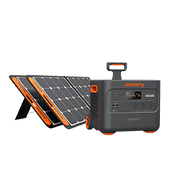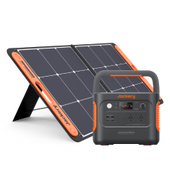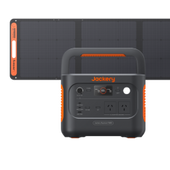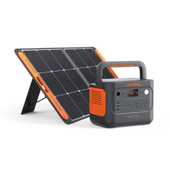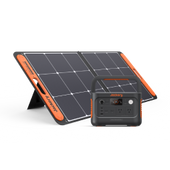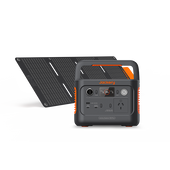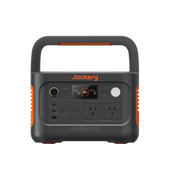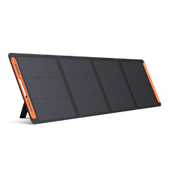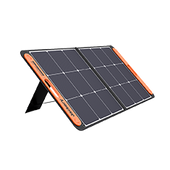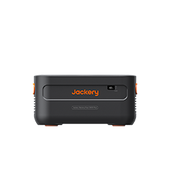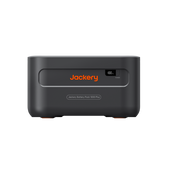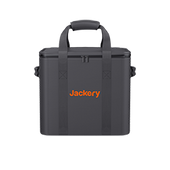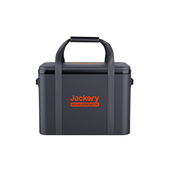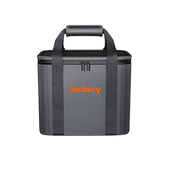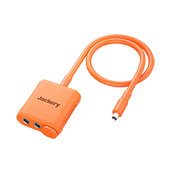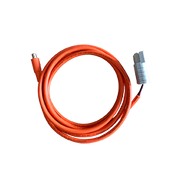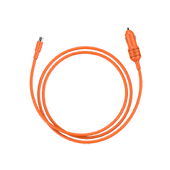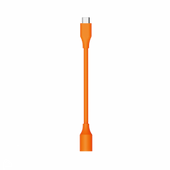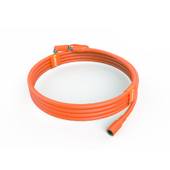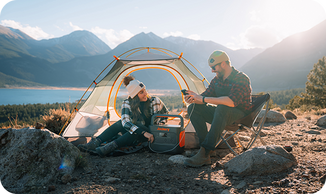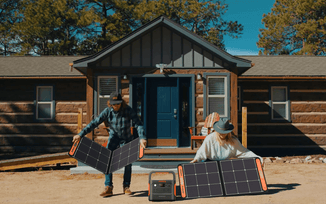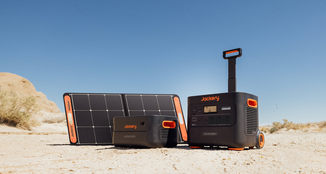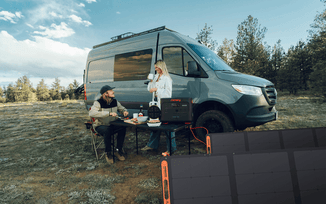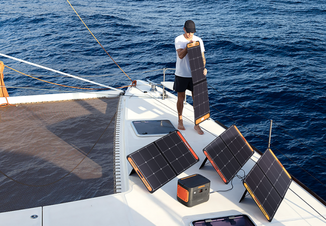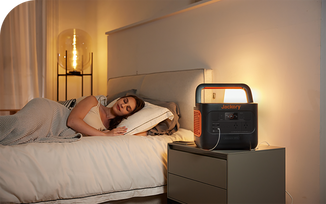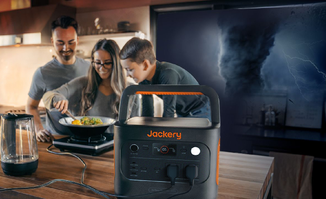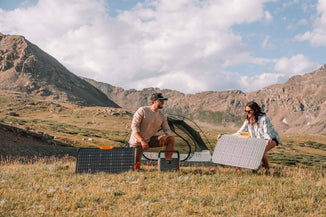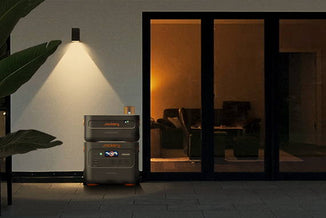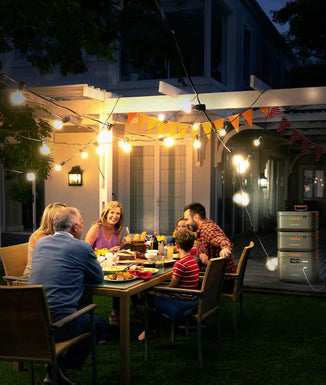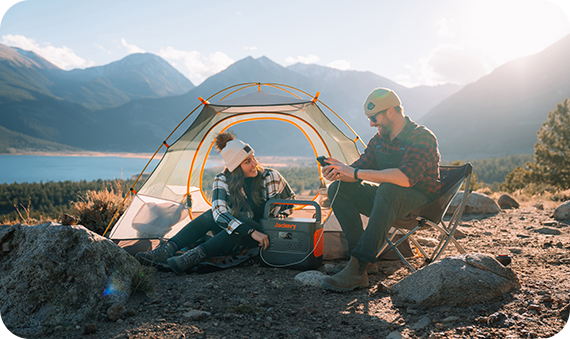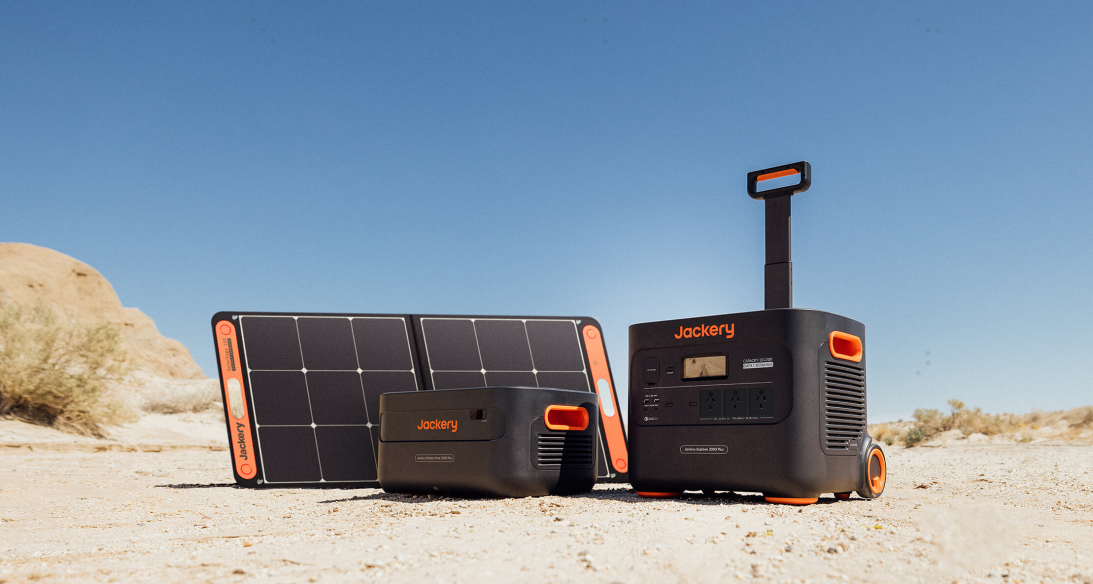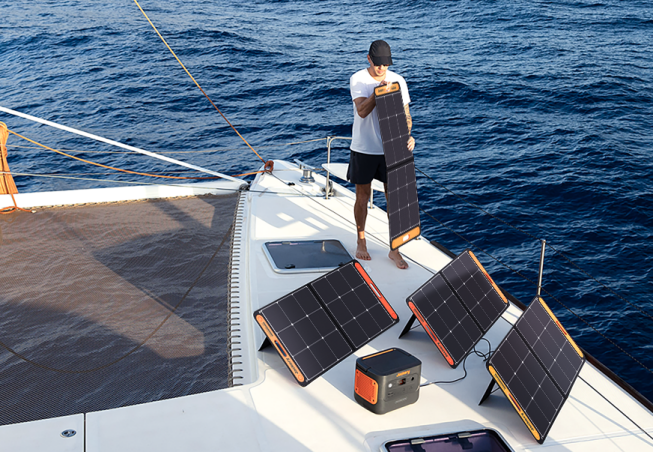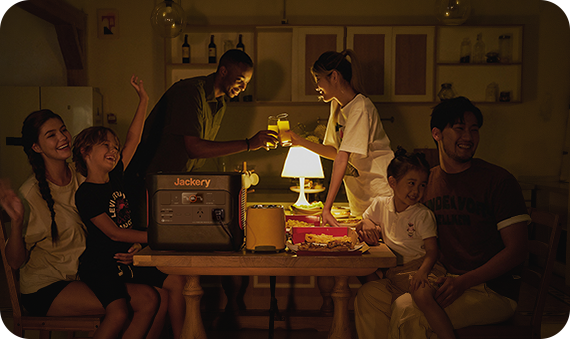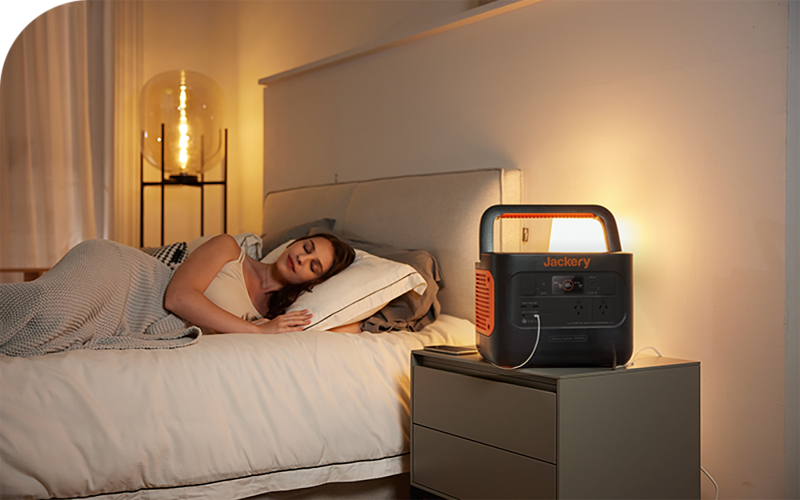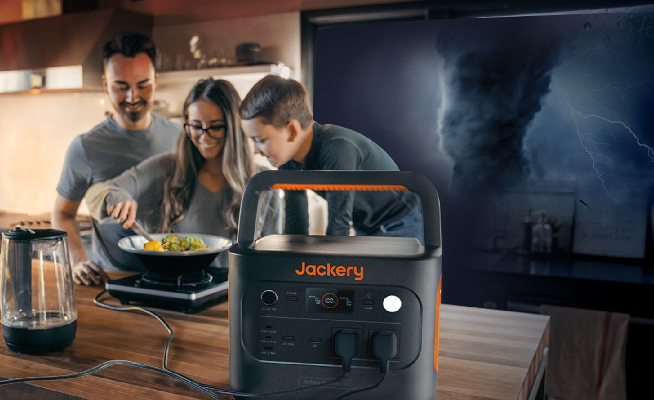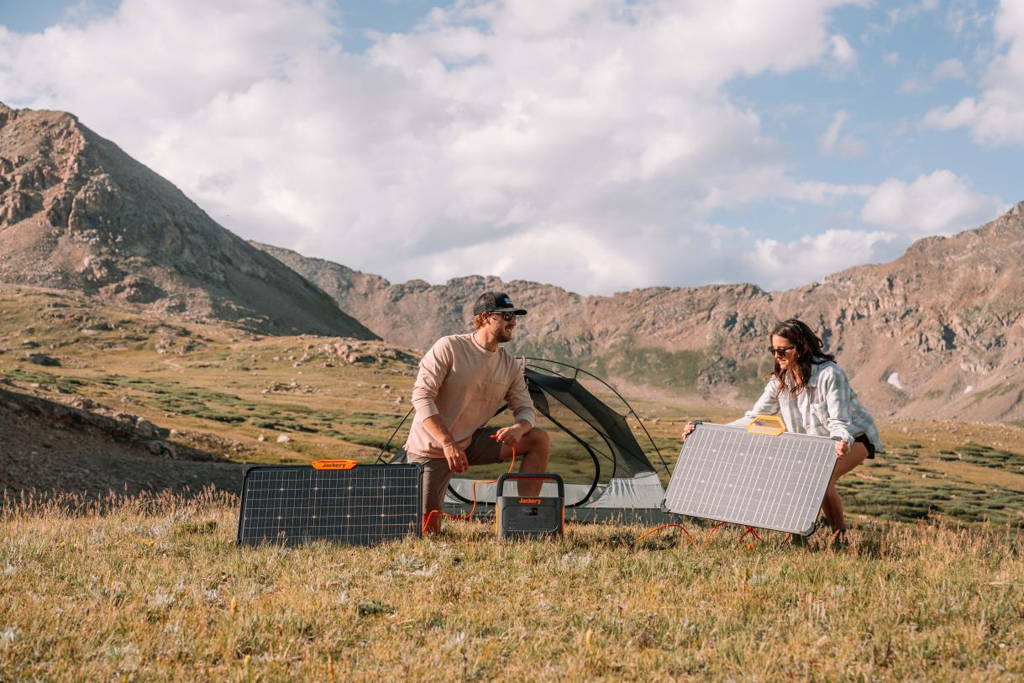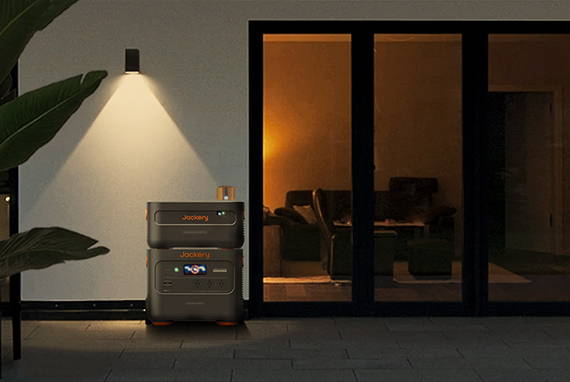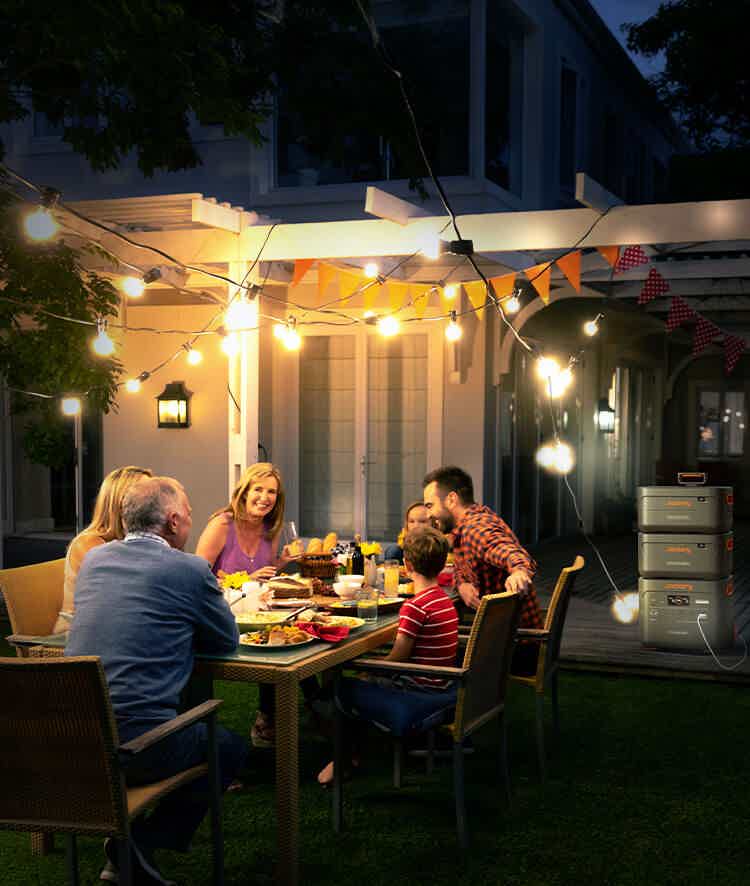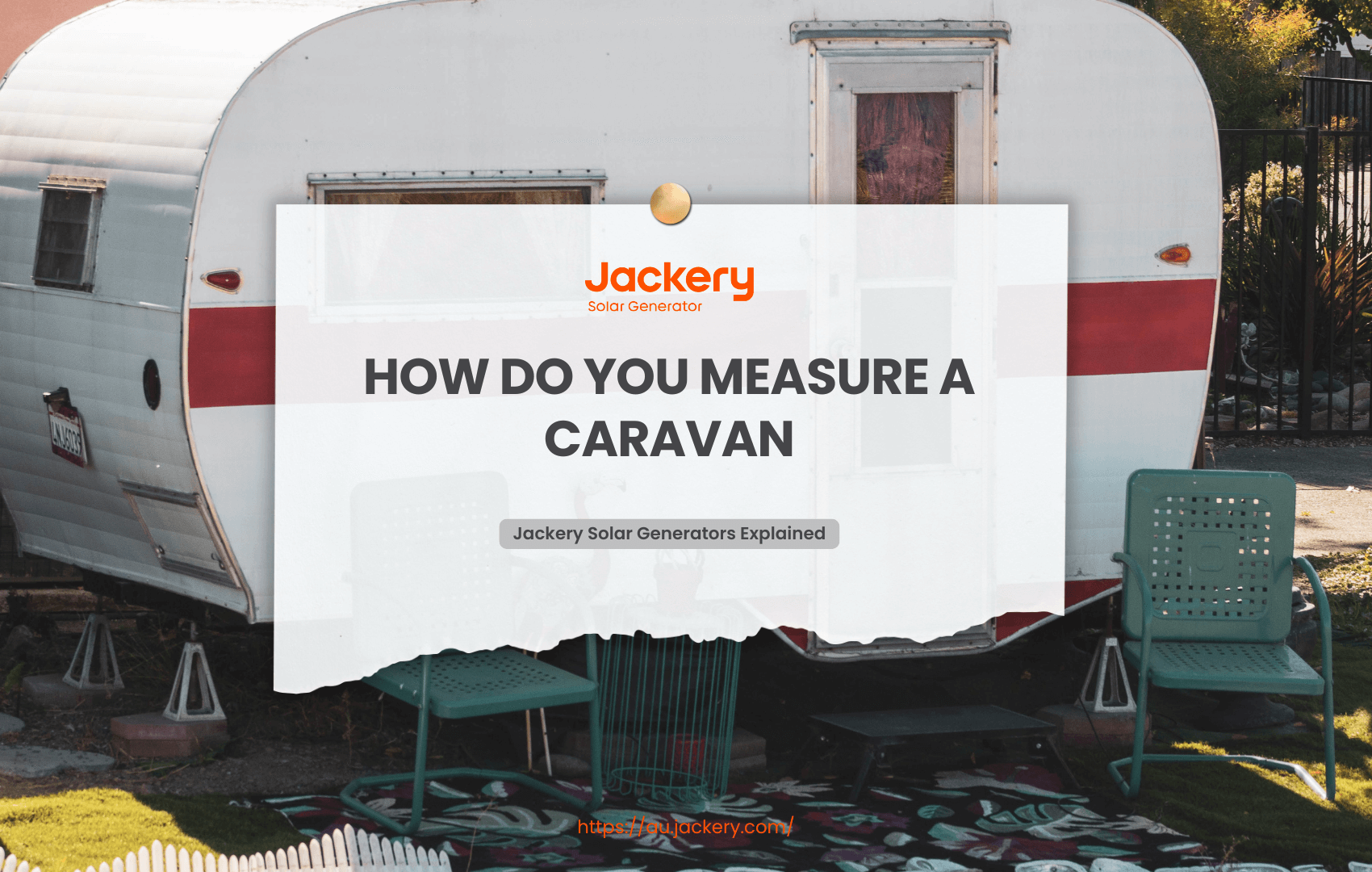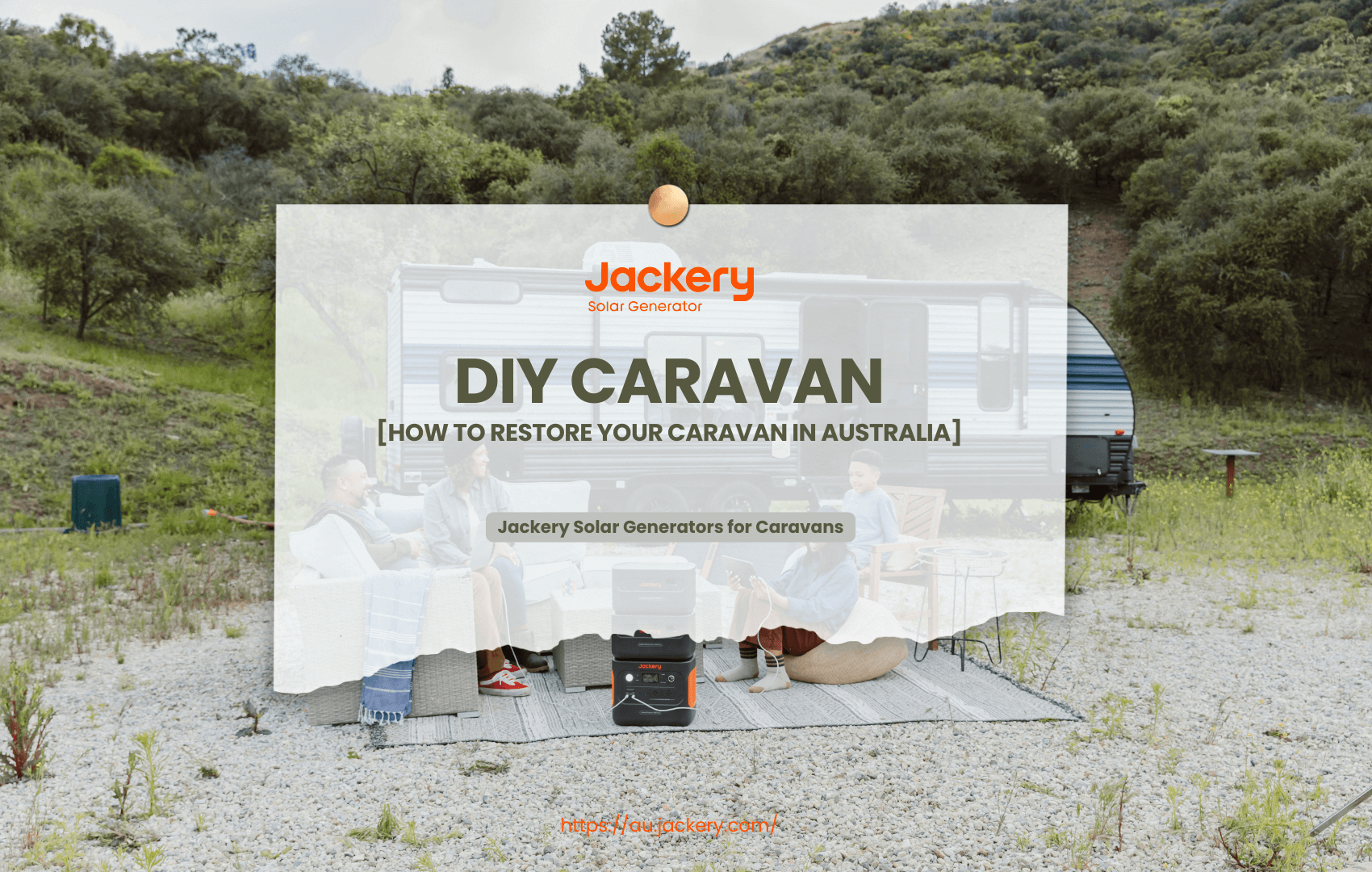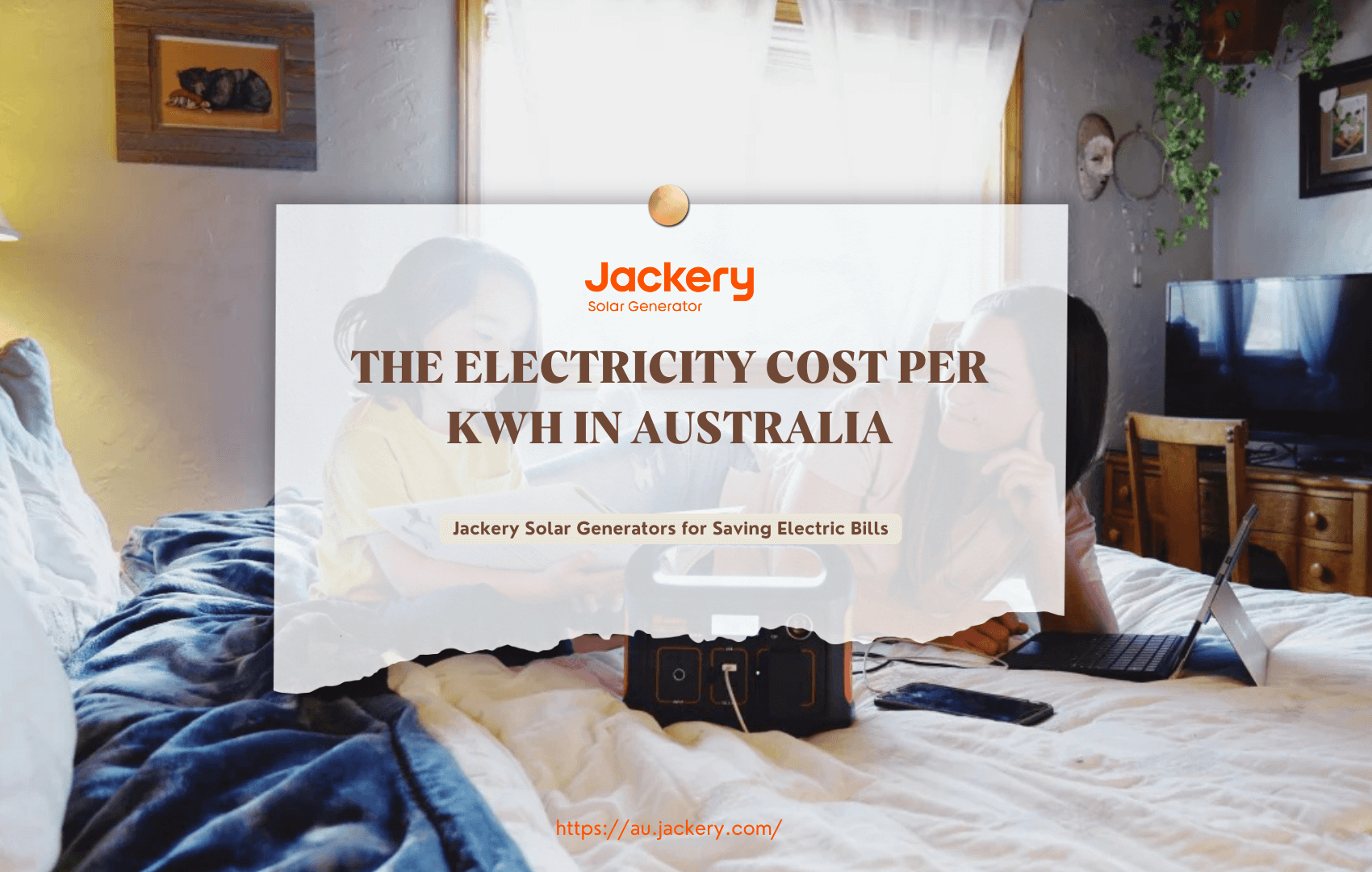|
Key Takeaways: |
|
- Caravan length can be measured as body length, internal length, or overall travel length—know which one applies to your needs. - Width is measured across the widest fixed point and must not exceed Australia's legal limit of 2.5 metres. - Height is calculated from the ground to the tallest fixed point, including roof-mounted accessories. - Measuring on level ground ensures accurate height, width, and length results. - Using tools like WikiCamps, laser measures, or mobile weighing services makes measuring easier and more accurate. - You can consider using a Jackery Solar Generator for your caravan. We recommend the Jackery Solar Generator 1000 v2 and 2000 Plus to power your caravan appliances effectively. |
Overview of Caravan Sizes
Understanding the different caravan measurements is essential to guarantee a comfortable and secure journey. Caravan sizes are usually classified according to length, which has a direct impact on internal living space, storage needs, and towing convenience.
Common Caravan Length Categories
Small Caravans (10ft-18ft / 3.05m-5.49m): Ideal for solo travellers or couples, these compact caravans are lightweight and easy to maneuver, making them suitable for navigating tight spaces and off-road adventures.
Medium Caravans (18ft-22ft / 5.49m-6.71m): Offering a balance between space and drivability, medium-sized caravans are popular among couples and small families seeking additional comfort without compromising on mobility.
Large Caravans (23ft-26ft / 7.01m-7.92m): Although they demand more thought when it comes to storage and towing, large caravans, which are designed for families or those who want spacious living areas, offer plenty of space for sleeping, dining, and relaxing.
Key Caravan Measurements
Body Length: This is the external length of the caravan's main body, with the exception of parts like the A-frame, tow bar, and accessories put on the back. It is frequently used as a benchmark for evaluating living space.
Overall Length: This dimension is essential for storage concerns and determining whether the caravan fits within specified locations. It is measured from the front of the coupling to the back of any attached equipment (such as spare wheels or bumpers).
Internal Length: This term refers to the amount of space that may be utilised inside the caravan, measured from the front to the back walls. Understanding the actual living space provided is absolutely necessary.
How Do You Measure a Caravan?
Ensuring road safety, regulatory compliance, and maximum travel comfort depends on precise measurements of your caravan's dimensions. The dimensions of your caravan's length, breadth, and height must be measured according to certain rules in Australia. Here is a thorough analysis:

Caravan Length
Caravan length is typically assessed in two primary ways:
Body Length: This is the length of the caravan's main body, not including the tow bar, A-frame, or any extras put on the back. It serves as a standard point of reference for comprehending the caravan's living area.
Overall Length: The caravan's rearmost point, including any attached equipment like bumpers or spare wheels, is measured from the front of the connection, which is where the caravan connects to the tow vehicle. Its dimension is essential for storage purposes and to ensure the caravan fits in allotted locations.
To measure the overall length:
Step 1: Position the caravan on a level surface.
Step 2: Using a measuring tape, measure from the foremost point of the coupling to the rearmost fixed point of the caravan, ensuring all protrusions are included.
The width of a caravan is calculated at its widest point. It usually excludes detachable components like mirrors or awnings but includes fixed external elements like wheel arches. The legal maximum caravan width in Australia is 2.5 metres.
To measure the width:
Step 1: Stand at the rear of the caravan.
Step 2: Measure from the outermost point on one side to the outermost point on the opposite side, ensuring the tape measure is level and straight.
Caravan Height
The tallest fixed point of the caravan, which could include solar panels or air conditioners positioned on the roof, is measured from the ground. Navigating underpasses, bridges, and storage facilities requires this measurement. The highest caravan height permitted in Australia is 4.3 metres.
To measure the height:
Step 1: Ensure the caravan is on a level surface.
Step 2: Using a measuring tape or a laser measure, determine the distance from the ground to the highest fixed point on the caravan's roof.
Why Caravan Size Matters?
The selection of a suitable caravan size is essential in order to guarantee a vacation experience that is secure, comfortable, and pleasurable across the various landscapes that Australia has to offer. This is why the size of the caravan is important:
Towing Capacity and Vehicle Compatibility
Your caravan's weight and dimensions must match your car's towing capabilities. Going above this limit may result in safety risks, greater fuel consumption, and mechanical problems. When assessing whether your car can securely tow your caravan, it's critical to take into account both the Aggregate Trailer Mass (ATM) and the Tare Mass (unladen weight).
Legal Compliance and Road Safety
According to Australian rules, caravans must not exceed 2.5 metres in width and 4.3 metres in height. Respecting these boundaries lowers the chance of accidents and guarantees legal compliance, particularly while driving underneath underpasses or on narrow roadways.
Campsite Accessibility
The selection of campsites you can visit depends on the size of your caravan. Due to park laws, larger caravans might not be allowed in some locations or might be subject to restrictions. Giving precise measurements at the time of booking guarantees an appropriate and secure place to stay.
Interior Comfort and Layout
The size of the caravan has a direct impact on the available inside space and arrangement. Larger caravans may be more difficult to move and park, even though they provide more living space and services. On the other side, smaller caravans may have fewer amenities but are simpler to manage.
Fuel Efficiency and Operating Costs
Larger and heavier caravans usually use more gasoline, which raises the expense of travel. They might also cause additional wear and tear on your towing vehicle, raising maintenance costs over time.
How to Weigh a Caravan?
For safe towing, regulatory compliance, and optimum performance on Australian roads, it is imperative that you weigh your caravan accurately. Overloading your car might result in penalties, problems with your insurance, and more wear and tear. A thorough guide on weighing your caravan can be found here:

Utilise a Public Weighbridge
There are public weighbridges all around Australia, and they are frequently found at commercial locations, transport depots, and council trash facilities. Use apps like WikiCamps or the National Measurement Institute's directory to locate one in your area.
Steps to Weigh Your Caravan:
1. Weigh the Entire Setup (Gross Combined Mass - GCM): Bring your hitched trailer and fully laden automobile to the weighbridge. Fuel, water, equipment, and all passengers are included in this measurement.
2. Weigh the Caravan Separately (Aggregate Trailer Mass - ATM): After unhitching it, weigh the caravan by itself. This gives the caravan's entire weight, including the mass of the tow ball, when it is completely loaded.
3. Weigh the Caravan Axles (Gross Trailer Mass - GTM): The weight supported by the caravan's axles is measured by driving the tow vehicle off the weighbridge once the caravan is hooked, leaving only the wheels on the scale.
4. Determine Tow Ball Mass (TBM): To get the weight placed on the car's tow ball, subtract the GTM from the ATM.

Consider Mobile Weighing Services
Mobile weighing services like Vanweigh Townsville provide on-site evaluations if using a weighbridge is inconvenient. In addition to offering accurate measurements, these services can offer guidance on compliance and weight distribution.
Use Portable Caravan Scales
For routine monitoring, you may weigh your caravan at home with portable scales like the Reich Caravan Weight Control or Black Jack Weight Scale. These tools are helpful for monitoring weight fluctuations when making adjustments or loading equipment. Visit Caravan RV Camping for more details.
Key Weight Terms Explained
Tare Mass: The weight of the empty caravan as specified by the manufacturer.
Aggregate Trailer Mass (ATM): When unhitched, the total weight of the fully loaded caravan.
Gross Trailer Mass (GTM): The weight supported by the caravan's axles when hitched.
Tow Ball Mass (TBM): The downward force the caravan exerts on the tow vehicle's hitch.
Gross Combined Mass (GCM): The total weight of the loaded tow vehicle and caravan combined.
Understanding these phrases is essential to ensure your setup stays within safe and legal weight restrictions. Depending on the state and seriousness of the infraction, exceeding these restrictions might result in fines of $200 to $2,000 in some cases.
Weighing your caravan regularly improves overall travel safety, extends the life of your vehicles, and guarantees safe towing procedures. Being aware of your caravan's weight is essential to responsible caravanning in Australia, whether you use portable scales, a public weighbridge, or a mobile service.
Common Mistakes When Measuring a Caravan (and How to Avoid Them)
Your caravan must be measured accurately to ensure travel convenience, safety, and regulatory compliance. However, a variety of common mistakes might lead to information that is not correct. Here is a detailed analysis of these risks and how to avoid them:

Mistake 1: Confusing Different Length Measurements
There are several ways to measure a caravan's length: body length, internal length, overall (travel) length, and open length (for models with pop-out beds or slide-outs). A lack of understanding may result in errors in planning and compliance.
|
Different Length Measurements |
|
|
Body Length |
External length of the caravan body, excluding the drawbar and rear attachments. |
|
Overall Length |
Total length from the front of the coupling to the rearmost point, including any mounted equipment. |
|
Internal Length |
Length inside the caravan from the front to the rear walls. |
|
Open Length |
Length when the caravan is fully extended, including slide-outs or pop-out beds. |
How to Avoid: Always specify which measurement is needed for your particular need, such as reserving a campsite or storing space.
Mistake 2: Neglecting to Include Attachments and Accessories
Your caravan's dimensions may be underestimated if you don't consider external accessories like toolboxes, bike racks, or spare tyres.
How to Avoid: To provide precise overall measurements, incorporate all fixed exterior components while taking measurements.
Mistake 3: Measuring on Uneven Ground
Taking measurements on sloping or uneven surfaces can result in inaccurate results, particularly when it comes to height and weight distribution.
How to Avoid: Before taking any measurements, make sure your caravan is on a level surface. If required, use levelling tools to guarantee precision.
Mistake 4: Overlooking Legal Dimension Limits
In Australia, caravans must adhere to specific size regulations:
|
Caravan Legal Dimension Limits |
|
|
Maximum Width |
2.5 Metres |
|
Maximum Height |
4.3 Metres |
|
Maximum Combined Length (Caravan + Tow Vehicle) |
19.0 Metres |
How to Avoid: In order to prevent fines and maintain road safety, make sure your caravan and any accessories adhere to certain legal restrictions.
Mistake 5: Ignoring the Impact of Load on Dimensions
Your caravan's height and weight distribution may change depending on how loaded it is, affecting its compliance with regulations.
How to Avoid: Remeasure your caravan's dimensions after loading to make sure it stays within safe and legal bounds.
Mistake 6: Misinterpreting Manufacturer Specifications
If you only use the manufacturer's dimensions without checking them, there may be differences, as they might not consider aftermarket additions or changes.
How to Avoid: To get precise dimensions, measure your caravan physically, taking into account all additions and alterations.

Jackery Solar Generator for Caravans
Jackery Solar Generators are exceptionally well-suited for caravans due to a combination of design, technology, and practical benefits that align perfectly with the needs of mobile living. Caravans have limited space. Jackery Portable Power Stations are designed to be compact and often feature integrated handles, making them easy to store in tight spots, under beds, or in cupboards.
Unlike fixed electrical systems, a portable Jackery can be moved outside for solar charging in optimal sunlight, brought inside for powering devices, or even used in an awning or outdoor living area. This flexibility is a huge advantage.
Traditional gasoline generators are noisy and produce harmful fumes, making them unsuitable for use inside a caravan or in quiet campgrounds. Jackery units operate silently and produce zero emissions, allowing you to enjoy the peace of your surroundings and adhere to campground noise regulations.
Paired with Jackery Solar Panels, these generators allow you to harness the sun's energy, providing true off-grid capability. This means you can stay in remote locations for extended periods without needing access to shore power, opening up vast possibilities for exploration. Here, we recommend Jackery Solar Generator 1000 v2 and 2000 Plus for your caravan.
Jackery Solar Generator 1000 v2
The Jackery Solar Generator 1000 v2 is a compelling choice for caravan owners, especially those who prioritise a balance of power, portability, and modern features for short to medium-length trips.

Lightweight and Portable (Approx. 23.8 lbs / 10.8 kg): For its power output and capacity, the 1000 v2 is relatively lightweight and features a foldable handle. This makes it easy to move around your caravan, take it outside for solar charging, or transport it to different locations, which is crucial for mobile living.
Quiet Operation (Less than 22dB): This greatly benefits caravan life. Unlike noisy gasoline generators, the 1000 v2 operates at a whisper-quiet level, ensuring peace and quiet at your campsite or inside your caravan, even during overnight charging.
Decent Capacity (1070Wh): With over 1 kWh of capacity, it can comfortably handle the daily power needs of many caravan setups, especially for charging devices, running lights, and operating a cooler or small fridge. This makes it suitable for weekend trips and extended stays where you have regular access to solar charging.
Increased Power Output (1500W rated, 3000W surge): This is a significant upgrade from its predecessor (Explorer 1000 v2) and allows it to power a broader range of caravan appliances. You can run essentials like portable refrigerators (around 60W for 15 hours), camping lights, and even some higher-wattage items for short periods, such as a coffee maker (550W for about 1.5 hours) or a microwave (1160W for about 0.8 hours). The 3000W surge capability means it can handle the initial power draw of motors in appliances like blenders or some small air conditioners.
Rapid Charging (1 Hour Emergency Charging): The v2 boasts "ChargeShield 2.0" technology, allowing for incredibly fast charging from a wall outlet. While the "1 hour" is for emergency charging, it means you can quickly top it up when you have access to grid power. This is incredibly convenient for last-minute preparations or when you need a quick boost.
Comes with a 100W or 200W Solar Panel: Many packages include a high-efficiency Jackery SolarSaga 100W or SolarSaga 200W solar panel, providing immediate solar charging capability for off-grid power. It often supports up to 400W solar input (with multiple panels), allowing for faster solar recharging.
|
Jackery Solar Generator 1000 v2 Running Time |
|
|
Portable Fridge (60W) |
15H |
|
Coffee Maker (550W) |
1.5H |
|
Projector (100W) |
8H |
|
Phone (29W) |
34 Times |
|
Laptop (80W) |
13 Times |
(*The working hours are only for reference; the actual working hours depend on your usage.)
Jackery Solar Generator 2000 Plus
The Jackery Solar Generator 2000 Plus is a premium choice for caravan owners. Compared to smaller models, it offers a significant upgrade in power, capacity, and longevity. It's particularly suitable for those who want to run more power-hungry appliances and extend their off-grid adventures.

High Power Output (3000W Rated, 6000W Surge): This is the biggest differentiator. With 3000W continuous output and a 6000W surge capability, the 2000 Plus can handle almost any standard household appliance you might bring into a caravan. This includes microwave ovens, electric kettles, coffee makers, hair dryers, toasters, and more.
Large Base Capacity (2042Wh) with Massive Expandability: The 2042Wh (over 2 kWh) base capacity provides ample power for several days of essential caravan use (lights, fridge, charging devices, fans). This is a game-changer for serious caravanners or those planning longer expeditions. You can connect up to five additional Jackery Battery Pack 2000 Plus units to the main power station, expanding the total capacity to a staggering 12kWh. This modularity means you can scale your power as needed, from a weekend trip to extended off-grid living, even powering higher-draw items for longer.
Exceptional Lifespan: The 2000 Plus utilises a LiFePO4 battery, which is rated for 4,000 charge cycles to 70%+ capacity. This translates to over a decade of regular use, offering a significantly longer lifespan than traditional lithium-ion batteries and making it a long-term investment.
Fast Recharging: The 2000 Plus can be fully recharged from a wall outlet in approximately 1.7 hours. This rapid charging capability is invaluable when you have limited access to grid power (e.g., at a campsite with hookups for a short period). It supports a high solar input, allowing you to connect multiple Jackery SolarSaga 200W solar panels for incredibly fast solar recharging. This means you can quickly replenish your battery even when deep in the wilderness, maximising your off-grid time.
|
Jackery Solar Generator 2000 Plus Running Time |
|
|
Portable Fridge (60W) |
21.5H |
|
Coffee Maker (550W) |
2.8H |
|
Projector (100W) |
14.2H |
|
Phone (27W) |
60 Times |
|
Laptop (80W) |
15 Times |
(*The working hours are only for reference; the actual working hours depend on your usage.)
FAQs
The following are the frequently asked questions about measuring a caravan in Australia.
1. Does caravan measurement include a drawbar?
Both the body length and the overall length can be used when discussing caravan measurements in Australia. The drawbar is included in the overall length; however, it is not included in the body length. The overall length, which considers the area the caravan takes up when attached, is essential for storage and towing purposes.
2. Where do you measure a caravan's length?
Use a tape measure to measure the total length of a caravan, including any rear-mounted accessories like bumpers or spare wheels, from the front of the coupling (hitch point) to the farthest fixed point. This measurement ensures accurate planning for storage, towing, and campground reservations.
3. What size is my caravan?
The body length of your caravan, excluding the drawbar and rear attachments, usually indicates its size. Manufacturers frequently specify this measurement, which can be found in the owner's manual or on the compliance plate. For example, a model marked 17 feet indicates the caravan's body length.
4. How wide is a 17ft caravan?
A 17ft caravan's width might change according to the manufacturer and model. The typical external width of caravans in Australia is between 2.05 and 2.56 metres, with an average of 2.38 metres. For precise information, you must verify the precise measurements of your caravan model.
5. Does caravan length include a frame?
Depending on the situation, the A-frame may or may not be included in caravan length measures. The body length only looks at the caravan's primary construction, excluding the A-frame. However, the total length provides a thorough dimension for storage and towing needs, taking into account the A-frame, rear bumper, and any attached accessories.
Final Thoughts
Measuring your caravan involves more than just numbers; it also involves planning, safety, and maximising each experience. Whether you're pitching up in a park by the sea or towing across the desert, precise measurements guarantee that your caravan will fit your trip.
Being knowledgeable on the road provides you with peace of mind, from calculating weight and compliance to comprehending internal and external dimensions. Using the appropriate tools and avoiding common blunders can have a significant impact. Verify your caravan's dimensions one more time before you hitch up and leave; you'll be happy you did when every stop goes without a hitch.

